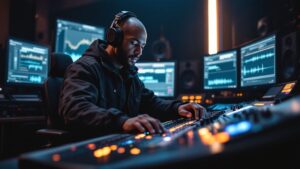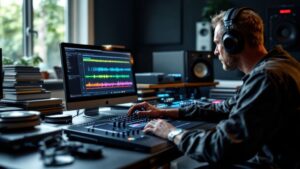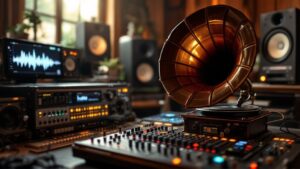The Evolution of Audio Mastering Levels
Audio mastering has changed dramatically over the decades, driven by new technologies and changing ways people listen to music. In the early days, vinyl records had strict physical limits on signal levels to prevent distortion. This required mastering engineers to carefully optimize the balance between volume and dynamic range to preserve musical quality.
The Rise of Loudness
The game changed with new digital tools. Digital Audio Workstations (DAWs) and digital signal processing made it possible to achieve much higher volumes than before. This shift started back in the 1940s with jukeboxes – louder records simply stood out more when played at preset volumes. By the 1950s, loud 7-inch singles had an edge in radio station playlists. Labels like Motown became known for pushing vinyl's volume limits. These early trends set the stage for what became known as the "Loudness War."
The Digital Era and the Loudness War
The digital age took loudness to new extremes in the late 1990s and early 2000s. Under pressure to make tracks "competitively loud," engineers relied heavily on compression and limiting. While this created louder masters, it often crushed the life out of the music. Many recordings from this period sound flat and compressed, missing the natural dynamics that make music engaging.
The Modern Approach
Recent years have seen growing pushback against excessive loudness. Modern mastering engineers now focus on maintaining dynamic range while achieving balanced volumes. The industry has adopted new measurement standards like LUFS (Loudness Units relative to Full Scale) that better reflect how we perceive loudness. This more nuanced approach, combined with better understanding of human hearing, lets engineers create masters that are both impactful and musically satisfying. The goal is no longer maximum volume at any cost, but finding the sweet spot between loudness, dynamics, and overall sound quality.
Understanding The Loudness Wars
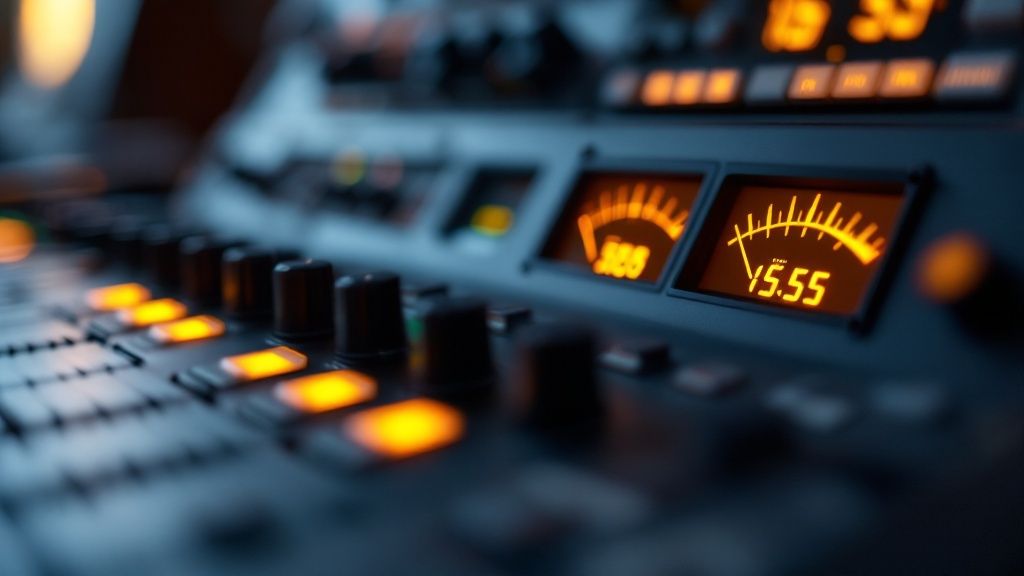
From the late 1990s through the mid-2010s, the music industry saw an intense battle known as the Loudness Wars. During this period, audio engineers and producers raced to create increasingly loud masters, believing that louder songs would grab more attention on radio and drive higher sales. This competitive mindset had major consequences for how music was produced and mastered.
The Impact on Dynamics and Sound Quality
The push for maximum loudness came with serious drawbacks. Engineers had to use heavy compression and limiting to achieve these extreme volume levels, which crushed the music's natural dynamic range – the difference between the softest and loudest parts of a song. This resulted in recordings that sounded flat and lifeless, missing the subtle variations that give music its emotional power. Many audio professionals and listeners grew frustrated with the harsh, fatiguing sound of over-compressed tracks.
Case Study: Metallica's Death Magnetic
The Loudness Wars peaked in the early 2000s, with Metallica's 2008 album Death Magnetic becoming a notorious example. The album had an incredibly small dynamic range of just 3 dB between its peak and average levels, leading to obvious distortion and clipping in the audio. Fans were so unhappy with the CD's sound quality that many sought out the Guitar Hero III version of the songs, which had better dynamics and less distortion. This showed how proper mastering directly affects listeners' enjoyment. Learn more about mastering history here.
The Shift Towards Balanced Mastering
As complaints about overly loud masters grew, the industry gradually moved toward a more balanced approach. Rather than chasing maximum volume at any cost, engineers began focusing on finding the sweet spot between loudness, dynamics, and overall sound quality.
Modern Tools and Technologies in Mastering
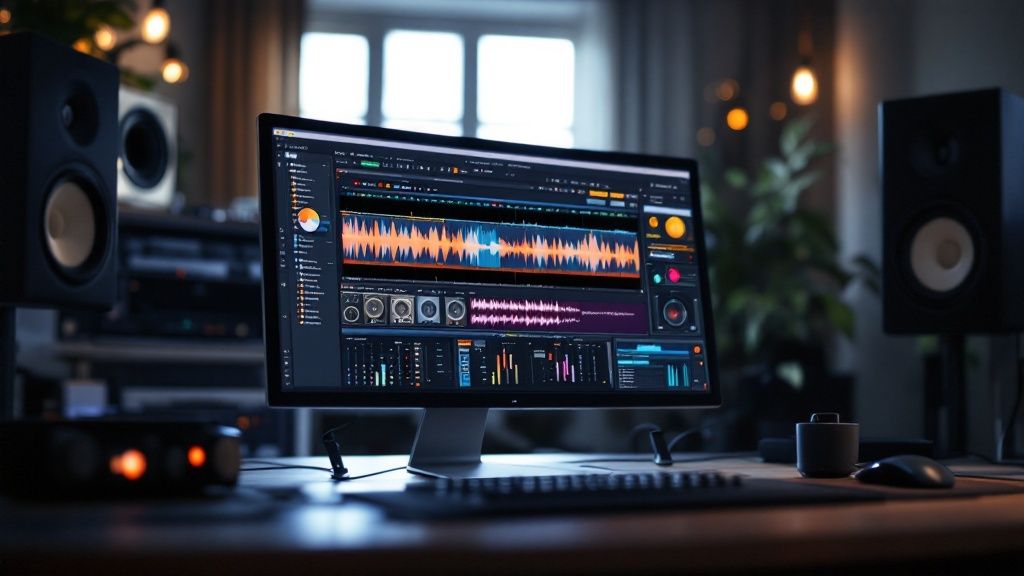
The tools and technology available to mastering engineers have grown remarkably over recent years. These advancements have changed how we approach professional audio mastering, bringing both new possibilities and challenges to the field.
Digital Audio Workstations (DAWs)
At the core of modern mastering is the Digital Audio Workstation (DAW). These powerful software platforms give engineers complete control over editing and processing audio. Leading choices include Pro Tools, Logic Pro X, and Steinberg Nuendo, each with its own strengths and distinct workflow options.
Mastering-Grade Plugins
High-end plugins have become essential tools for shaping sound. These software processors can either recreate classic hardware units or offer entirely new sound-shaping capabilities:
- Equalizers: Give precise control over frequencies to perfect tonal balance
- Compressors and Limiters: Handle dynamics and maximize loudness without distortion
- Stereo Imaging Tools: Add width and depth to create an immersive stereo field
The Role of AI in Mastering
AI tools are beginning to find their place in mastering workflows. While AI can analyze audio and suggest parameter settings quickly, human expertise remains crucial. Skilled engineers use AI as a helpful assistant rather than a replacement, combining technical analysis with artistic judgment.
Balancing Tradition and Innovation
The mastering field has seen major changes – from tape machines to today's powerful DAWs and AI tools. Key developments like the RIAA equalization curve for vinyl and plugin formats have reshaped how engineers work. Learn more about this evolution here. While professional mastering has become more accessible, the core principles of achieving balance, clarity and musicality remain unchanged. The most successful mastering engineers blend modern capabilities with deep understanding of these timeless fundamentals. You can explore additional mastering techniques in this guide on how to master audio.
Essential Metering and Measurement Techniques
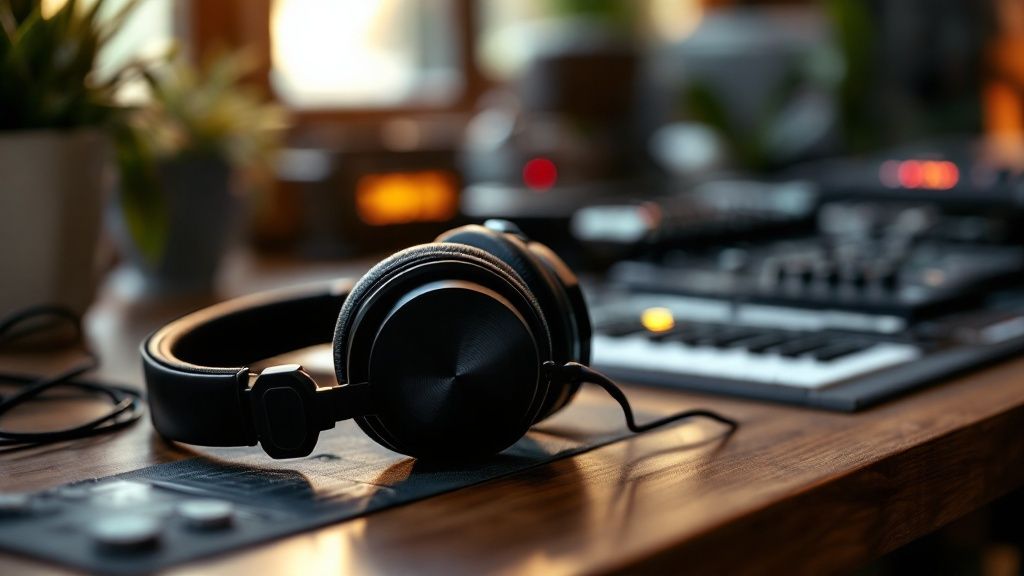
Getting accurate measurements and levels in audio mastering requires a solid grasp of key metering tools and techniques. Audio mastering engineers focus on three main metrics to create professional masters that meet modern standards: LUFS (Loudness Units relative to Full Scale), RMS (Root Mean Square), and peak levels. Each of these plays an important part in crafting a balanced, high-quality master.
Understanding LUFS, RMS, and Peak Levels
- LUFS: This standard measurement gives the most accurate picture of how loud a track sounds to our ears. It's widely used in broadcast and streaming because it accounts for how we perceive different frequencies.
- RMS: Shows the average level of the audio over time. RMS helps engineers understand how much energy and intensity the mix has overall.
- Peak Levels: Measures the highest points in your audio signal. Watching peak levels helps prevent distortion and clipping, especially in digital formats.
These different measurements work together. For example, you might adjust the LUFS to make a track competitive while keeping an eye on RMS to preserve the music's natural dynamics.
Practical Applications in Modern Mastering
Here's a basic workflow for using these metering tools:
- Meter Setup: Get your meters ready with the right settings for your project and platform.
- Initial Balance: Watch those peak meters to avoid any clipping.
- Dynamic Range Work: Use RMS to keep the energy up without squashing quieter parts.
- Loudness Goals: Adjust LUFS to hit your target level while keeping everything balanced.
Troubleshooting Common Challenges
Even with good tools, mastering can get tricky. Here are some common issues:
- Uneven Dynamics: Fix by checking your compressor settings and adjusting gain reduction.
- Loudness Problems: Often solved with careful EQ moves or multiband compression tweaks.
For more detailed guidance on these topics, check out the Tune Tailors blog. While every project needs its own approach, getting comfortable with these metering tools will help you deliver masters that sound great anywhere.
Achieving Balance: Dynamic Range vs. Loudness
Finding the sweet spot between dynamic range and perceived loudness is at the heart of great mastering. Think of it like conducting an orchestra – you want the quiet moments to be delicate and the crescendos to soar, all while maintaining a clear, present sound that engages listeners.
The Importance of Dynamic Range
Dynamic range measures the span between the softest and loudest parts of a song. When skillfully preserved, it lets music breathe and flow naturally. A gentle verse can build tension before exploding into an energetic chorus. But push too hard for loudness through compression, and you'll squash those emotional peaks and valleys that make music moving.
Perceived Loudness vs. Actual Loudness
Perceived loudness goes beyond what your meters show – it's about how loud something feels to our ears. Two tracks peaking at the same level can sound drastically different in loudness. A mix with prominent high-mids often feels louder than one with scooped mids, even at identical peak levels. This happens because human hearing is more sensitive to certain frequency ranges.
Modern Loudness Standards: LUFS
Today's mastering relies on precise loudness measurement tools. LUFS (Loudness Units relative to Full Scale) analyzes how humans actually perceive loudness across the frequency spectrum. This helps engineers deliver masters that meet platform requirements while keeping the music's natural dynamics intact.
Techniques for Balancing Dynamics and Loudness
Here's how skilled engineers maintain that crucial balance:
- Careful Gain Staging: Setting optimal levels throughout the signal chain prevents distortion and maintains clarity from input to output
- Subtle Compression: Light compression shapes the overall dynamics without flattening the life out of the music
- Frequency-Specific Processing: Strategic EQ adjustments can enhance perceived loudness without increasing actual levels
- Limiting: A gentle touch on the limiter catches peaks while preserving the music's natural ebb and flow
Communicating with Clients
Clear communication about technical decisions helps clients understand the value of dynamics. Explaining how dynamic range affects emotional impact often helps them appreciate why a slightly quieter master might serve their music better. You might be interested in: Our sitemap for further exploration. This collaborative approach leads to masters that excel both technically and artistically.
Mastering for Different Platforms and Formats
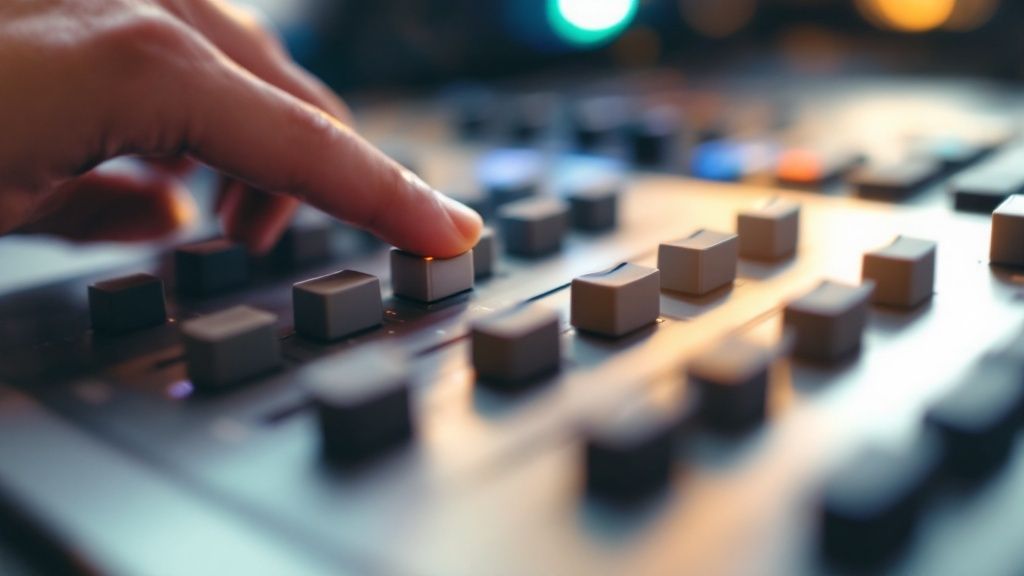
When mastering audio, the target platform and format significantly shape the process. Each medium – from digital streaming to vinyl records – comes with specific technical requirements that need careful consideration. A well-mastered track should sound great everywhere, whether played through headphones or on a high-end stereo system.
Getting the Most from Streaming Platforms
The digital streaming world demands precise audio mastering. Major platforms like Spotify, Apple Music, and YouTube use different loudness standards measured in LUFS. For instance, Spotify targets -14 LUFS, while other services may vary slightly. Following these specifications helps your music play at consistent volumes across platforms.
Essential Streaming Guidelines:
- Match LUFS targets for each platform
- Test stereo width to avoid playback issues
- Review metadata to meet platform standards
The Art of Vinyl Mastering
Vinyl mastering requires a unique approach due to the physical nature of records. The format needs careful management of dynamics and frequencies to maintain sound quality. Bass frequencies particularly need attention since too much low-end can cause the needle to jump during playback.
Key Vinyl Considerations:
- Plan track sequence for optimal sound distribution
- Focus on midrange clarity and warmth
- Control bass frequencies for reliable playback
Creating Masters That Work Everywhere
Good mastering engineers create versions that sound great across all formats. They use detailed checklists to verify technical requirements and quality standards before finalizing any project.
Master Quality Checklist:
- Test loudness across platforms
- Check dynamic range for musical impact
- Verify metadata accuracy
The team at Tune Tailors understands how to deliver masters that shine on every system. With careful attention to format-specific needs, your music will connect with listeners wherever they choose to play it.



